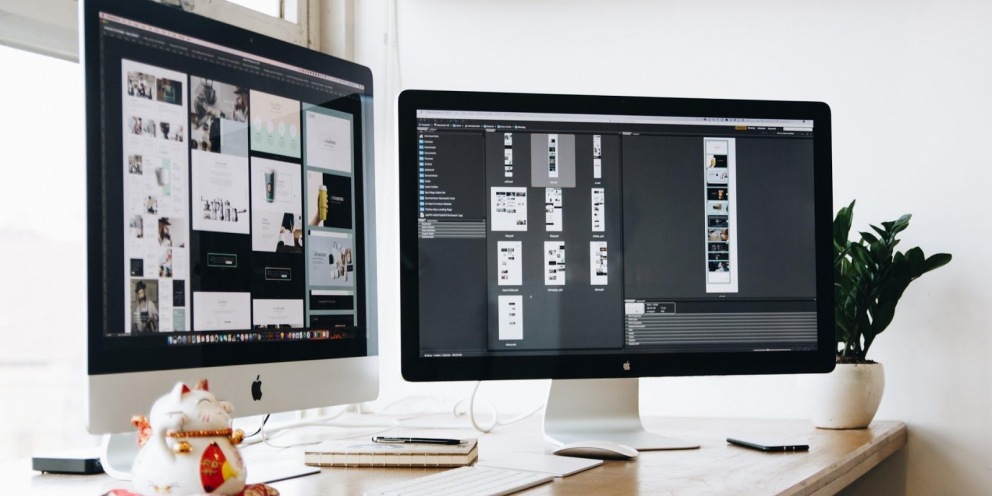Mission possible: Combining the design aesthetics with technical functionality

There’s always a struggle between making the website functional yet user-friendly and intuitive. There are tons of websites with great design but lack of understandable user experience and necessary features. Equally valid is the situation with all the necessary features yet the absence of well-thought design, corrupted elements, and different fonts here and there.
The first step that comes to mind is diving deeper into the design theory. Reading books, subscribing to web design courses, attending workshops, lectures, and other events that help you to understand the basics of how to make this experience better. It’s definitely an important contribution to the final result because knowing the main principles of theory will help you to view the process from a different angle.
So what is the right strategy to approach to build your website finding the perfect mix of performance and elegance? Let’s check:
Define what you want to achieve
The first thing on the list when making the website is defining its aim. Think over what type of actions you expect from people who visit the website. Making a purchase, subscribing to a newsletter, or having the possibility to see your portfolio are just a few of the possible options.
Answering this question will help you to establish a clear vision of the type of website you are planning to build and project the behavior of the target user.
Conduct business analysis and market research
When you are ready with the general assumption, it’s high time to start thinking about the business requirements. To do that, make sure to carefully write down all the user flows. It will help you to outline all the features you need on your website.
For an e-commerce store, they may include purchase, payment, additional items ordering, editing cart, etc. It’s also important to write user stories from the user perspective so that you can assess this or that feature from the point of value it brings.
Example of a user story:
“As a user, I want to have a possibility to see the cart content when I come back to the page so that I do not have to spend time adding everything anew after accidentally closing the page”.
When working on the user stories, and thinking over the concept of your website, competitor analysis is a great tool to assess the ways of features’ realization and the whole process behind to get inspiration, see the weak points and develop ideas on how to make it better on your website.
Prototype
Before opening a web editor, try to schematically visualize the website structure. Define the menu items and website navigation to find the most optimal ways of the user journey, and see how the components you plan to include match one another, shift them, and reorganize to find perfect combinations.
Technically, you need only a pen and a piece of paper to start, but with crystalizing your ideas, you may use the prototyping tools like Webflow or Figma to see these prototypes in action.
One of the popular mistakes in striving to do better than competitors is stuffing the interface with many different functions that make the user experience more complicated and can even lead to adverse effects when instead of making it better, you will puzzle the user.
So, the prototyping step is critical in singling out the helpful interface elements and eliminating those that bring distraction from your main goals.
Pro tip: MVP
When in doubt, plan the release with only a critical set of features to see if users behave as you expect and ask for their feedback. It may appear that they need something different that you had in mind.
So this way you can test your hypothesis on real users (it may be your friends or a limited group of users from your target audience). This practice is called an MVP (a minimum viable product) and it helps you to confirm the usefulness of your ideas.
Design
And finally the time for the actual design. When you make the way through to reach this far, designing the final elements and building the interface will seem much easier. In this step, you may consult different inspiring design resources and platforms where designers share.
Later on, from the designs you liked, you may compile mood boards to create something unique from this blend, think about branding, work on the color scheme, logos, and fonts as well as visual assets to give your website a unique style. The result of this step is a set of final mockups that need to be followed by the development.
During the design and development phase, make sure to also consider the accessibility of a website and focus on making its design inclusive, so that the user interface is equally convenient for impaired users and the rest of your audience.
Start the development process
Here the most interesting part starts, as all the graphic assets need to be transformed into working pieces of code so that you may publish the website on the internet and attract new users to it.
At this stage goes the choice of involved programming languages, business logic for the website or application, and its architecture at the same time adhering to the mockups and the best UI/UX practices. And for sure the release.
Depending on the complexity and methods used to build the website (custom-coded structure or a Content Management System), the process may take from a couple of days to several months before the website reaches the user and you are ready to enjoy the results.
Final thoughts
The process of achieving the simple yet elegant design on the finish line first may seem not easy at all. For sure it takes more time, and involvement of different specialists rather than start building it right away once you come up with the idea of a website. But it’s definitely worth all the efforts as this helps to approach the design the right way and save you a lot in the long run.
Even when the website is ready, you come up with new ideas and features to enhance the functionality. They may come from everywhere starting from the feedback of your customers, meeting the market demands, or scaling the business. So the new improvements and changes gradually fill the backlog and you can start going through the same steps planning for future releases with the user in mind.
Author bio
Stewart Dunlop looks after content marketing at Udemy and has a passion for writing articles that users will want to read. In his free time, he likes to play football and read Stephen King.






